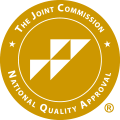Cedar Crest Hospital & Residential Treatment Center helps individuals who are struggling with prescription drug addiction find long-term recovery. Located in Belton, TX, Cedar Crest is the leader in mental health care.
Understanding Prescription Drugs
Learn about Prescription Drugs
Prescription painkillers have been extremely effective in improving the lives of those individuals who were once plagued with acute or chronic physical pain. However, these medications can be very dangerous. Regardless of whether they are consumed under the care of a professional or if they are abused for recreational means, prescription painkillers are addictive. Many of the most popular painkillers, including OxyContin, Demerol, Vicodin, and Percocet, all contain opioids, which are a very addictive, habit-forming category of drugs that also includes heroin and morphine.
This does not mean that consuming a prescription painkiller that has been provided by a medical professional is the same as abusing an opioid substance like heroin. Prescription medications can be extremely beneficial, and the risks are minimized when they are consumed as prescribed. However, the risk of developing an opioid use disorder is very real, and this risk rises significantly when these drugs are consumed outside of medical supervision.
Oxycodone, meperidine, and hydrocodone (the active ingredients in OxyContin, Demerol, and Vicodin, respectively) are semi-synthetic or synthetic opioids, meaning they are developed within a laboratory, however, share similar structures with naturally occurring extracts that come from the poppy plant from which heroin is derived. As time goes on, those who consume opioid-based prescription painkillers can become tolerant to them. Tolerance is a sign of dependency, as is the presence of painful withdrawal symptoms when an individual attempts to stop his or her use of the drug or significantly limit the amount that he or she has been consuming.
Cravings for the desirable effects of an opioid-based painkiller can cause an individual to remain trapped within what feels like an unstoppable cycle of drug abuse, and it can be very difficult for someone who is addicted to a prescription painkiller to end his or her dependence without the help of a professional team. When comprehensive care is provided, an individual can clear his or her body of opioids in a safe and comfortable manner, as well as continue to strive towards completing the therapeutic programming developed for him or her so he or she can prevent relapse and live a happy, opioid-free life.
Statistics
Prescription drug addiction statistics
According to the National Institute on Drug Abuse (NIDA), more than 52 million Americans have used prescription drugs for non-medicinal purposes at least one time within their lives, and six million of those have done so within the past 30 days. The Centers for Disease Control and Prevention (CDC) reports that prescription painkillers containing opioids account for nearly 44 overdose deaths every day within the United States, breaking down to 18 women and 26 men. In 2013, over 16,000 people died from prescription painkiller overdose, while in 2011, prescription painkillers were the cause of 420,000 visits to the emergency room.
Causes and Risk Factors
Causes and risk factors for prescription drug addiction
The abuse of prescription painkillers and the development of opioid use disorder can be impacted by a handful of factors, such as:
Genetic: Extensive research proves the presence of a genetic impact on the development of chemical dependency. For example, possessing a genetic disposition to novelty-seeking behaviors and impulsivity can place an individual at risk for abusing these types of substances. In addition, studies that included twins and adopted children show that having a biological parent with a substance use disorder increases the chances that one will also face similar challenges.
Environmental: An individual who was exposed to child abuse or other types of childhood adversity will be at increased risk for engaging in substance abuse, as will someone who grapples with immense levels of stress that overpower his or her coping abilities. Specific to prescription painkillers, suffering from an injury or an accident that requires treatment including the use of prescription painkillers can serve as an environmental risk for developing this type of substance use disorder.
Risk Factors:
- Family history of substance use disorders
- Stress
- Poor coping skills
- Trauma
- Experiencing severe acute or chronic pain
- Prior substance abuse
- Ease of access to prescription pain medications
Signs and Symptoms
Signs and symptoms of prescription drug addiction
Below are some of the most common signs and symptoms that might show that an individual has been abusing prescription painkillers:
Behavioral symptoms:
- Borrowing or stealing medication that has been prescribed to someone else
- Social withdrawal and isolation
- Slurring speech
- Visiting multiple doctors to get prescriptions for painkillers
- Deception regarding whereabouts and/or activities
- Diminished participation in significant activities
Physical symptoms:
- Disrupted sleep patterns
- Itchiness
- Pupil dilation
- Impaired coordination
- Heavy perspiration
- Decreased blood pressure
- Constipation
Cognitive symptoms:
- Confusion
- Poor decision-making skills
- Disorientation
Psychosocial symptoms:
- Irritability
- Drastic changes in mood
- Depression
Effects
Effects of prescription drug addiction
Opioid use disorder, including an addiction to prescription painkillers, can have a dramatic effect on one’s physical, social, and mental wellbeing, and can lead to the following negative consequences:
- Suicide attempt or attempts
- Impaired or destroyed interpersonal relationships
- Homelessness
- Family discord, including separation and divorce
- Isolation
- Job loss and chronic unemployment
- Financial distress
- Development of physical health problems
- Suicidal ideation
- Legal problems, including arrest and incarceration
Overdose & Withdrawal Effects
Effects of prescription drug overdose & withdrawal
Effects of prescription painkiller withdrawal: Stopping or dramatically limiting one’s use of prescription painkillers after a dependency has developed can cause many painful symptoms of withdrawal, including the following:
- Irritability and agitation
- Heavy perspiration
- Fever
- Loss of appetite
- Watery eyes and runny nose
- Pain in bones and muscles
- Nausea, vomiting, and diarrhea
- Inability to sleep
- Dysphoria
- Powerful cravings for opioids
- Tremors and twitches
Effects of prescription painkiller overdose: Opioids interact with parts of the brain that also impact involuntary processes such as heart rate and respiration. Therefore, overdosing can place an individual in extreme danger. Someone who shows the following symptoms after consuming prescription painkillers should seek immediate medical attention:
- Slow or otherwise irregular pulse
- Extreme disorientation
- Pinpoint pupils
- Breathing problems
- Loss of consciousness
- Seizure
Co-Occurring Disorders
Prescription drug addiction and co-occurring disorders
An individual who has developed a dependency on prescription painkillers might also be struggling with a co-occurring mental health problem. Below are some of the most commonly diagnosed disorders in those who have developed opioid use disorder:
- Major depressive disorder
- Posttraumatic stress disorder (PTSD)
- Other substance use disorders
- Persistent depressive disorder

















